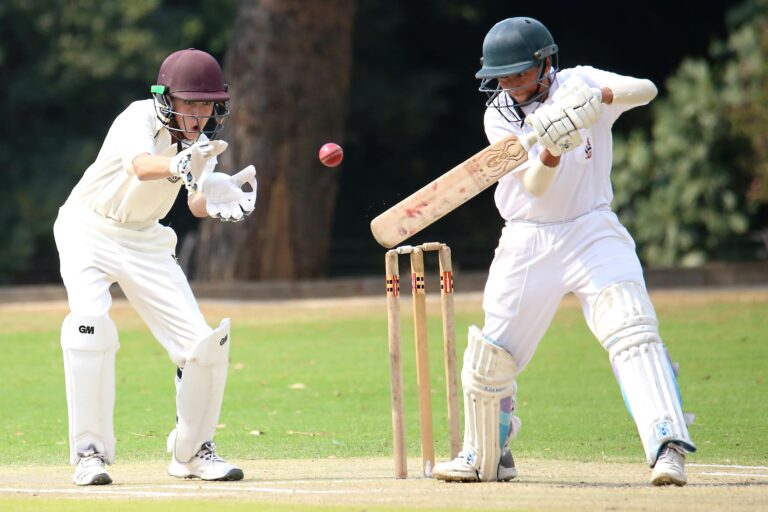How the ICC Decides World Rankings for Teams and Players
Laser247: The ICC rankings for teams in Test, ODI, and T20 formats are calculated based on a points system that takes into account match outcomes and the strength of the opposing team. Here’s how the system works:
1. Points Allocation
For each match or series played, teams earn points based on their performance. Winning a match or series earns a team more points, while losing results in fewer points or even deductions. The number of points awarded depends on the match format and the strength of the opposition.
- Test Matches: Test match rankings are weighted over a four-year cycle. The ranking points are recalculated after each series, with more emphasis placed on recent results. Test matches, being longer in format, offer more points compared to ODIs and T20s.
- ODI and T20 Matches: These formats use a similar points system, with points distributed based on each match or series played, but unlike Tests, they are ranked over a three-year cycle.
2. Opposition Strength
A key element in calculating team rankings is the strength of the opponent. A win against a higher-ranked team earns more points, while victories against lower-ranked teams earn fewer. Similarly, losing to a team ranked lower can result in significant point deductions. This factor ensures that teams are not merely rewarded for winning, but also for competing against stronger sides.
3. Ranking Calculation
After every series or set of matches, the ICC uses an average of the points accumulated over a specific period (three to four years). Teams are ranked based on their total points divided by the number of matches played during that time. This ensures a fair comparison between teams that play more matches and those that play fewer.
For example, if a team has played 30 matches and earned 3,000 points, their rating would be 100. These ratings are recalculated after every match or series, ensuring that the rankings are always up to date.
How the ICC Player Rankings Are Calculated
Individual player rankings in cricket batting, bowling, and all-rounder categories—are based on a weighted system that takes into account a player’s recent performance, quality of opposition, and match conditions. Here’s how the player ranking system works:
1. Batting Rankings
A player’s batting ranking is calculated based on their individual performances in matches. Several factors influence their score:
- Runs Scored: The number of runs scored in a particular match or series contributes significantly to a player’s ranking points.
- Strength of Opposition: Scoring runs against a higher-ranked bowling attack earns more points than scoring against weaker teams. This adjusts for the difficulty of the match.
- Match Conditions and Impact: If a player performs under difficult conditions or plays a match-winning innings in a high-pressure situation, they are awarded extra points. Similarly, scoring in low-scoring matches can boost ranking points.
2. Bowling Rankings
Just as with batting, a bowler’s ranking is influenced by several factors:
- Wickets Taken: The more wickets a bowler takes, the higher their potential points for that match.
- Opposition Quality: A bowler is awarded more points for dismissing high-ranking batsmen. This ensures that a bowler who consistently performs well against top teams receives recognition for those efforts.
- Match Conditions: Similar to batting, if a bowler performs exceptionally well in challenging conditions (e.g., on a flat pitch that favors batsmen), they may earn extra points.
3. All-Rounder Rankings
All-rounders are ranked based on their performances in both batting and bowling. A player’s ranking points in each discipline are combined to create their overall all-rounder score. This ensures that players who contribute significantly in both aspects of the online game are recognized.
4. Form and Consistency
Players are awarded or deducted points based on their form over time. Recent performances are given more weight in the ranking system. This ensures that players who are currently performing well rise in the rankings, while those with poor recent form may see a decline, even if they performed well in the past.
5. Injuries and Breaks
If a player misses several matches due to injury or personal reasons, their ranking does not drop immediately. The ICC’s system has a buffer period, allowing players to maintain their ranking if they have been sidelined temporarily. However, extended absences can lead to a drop in the rankings.
How Often Are Rankings Updated?
The ICC updates both team and player rankings after each series or significant event. This continuous updating process ensures that the rankings reflect the current state of international cricket as accurately as possible.
For example, after every Test series, the points for the involved teams and players are recalculated, which can result in shifts in the rankings. Similarly, major ICC tournaments like the Cricket World Cup or ICC T20 World Cup can lead to dramatic changes in both team and player rankings, as the high stakes of these events mean greater rewards or penalties in terms of points.
Conclusion
The ICC World Rankings provide a comprehensive and fair way to measure the performance of teams and players in international cricket. By taking into account factors like recent performance, opposition strength, and match conditions, the system ensures that rankings are accurate and reflective of current form. Whether you are following the progress of your favorite team or checking on the rise of individual players, the ICC rankings serve as a trusted benchmark for performance on the global stage.





